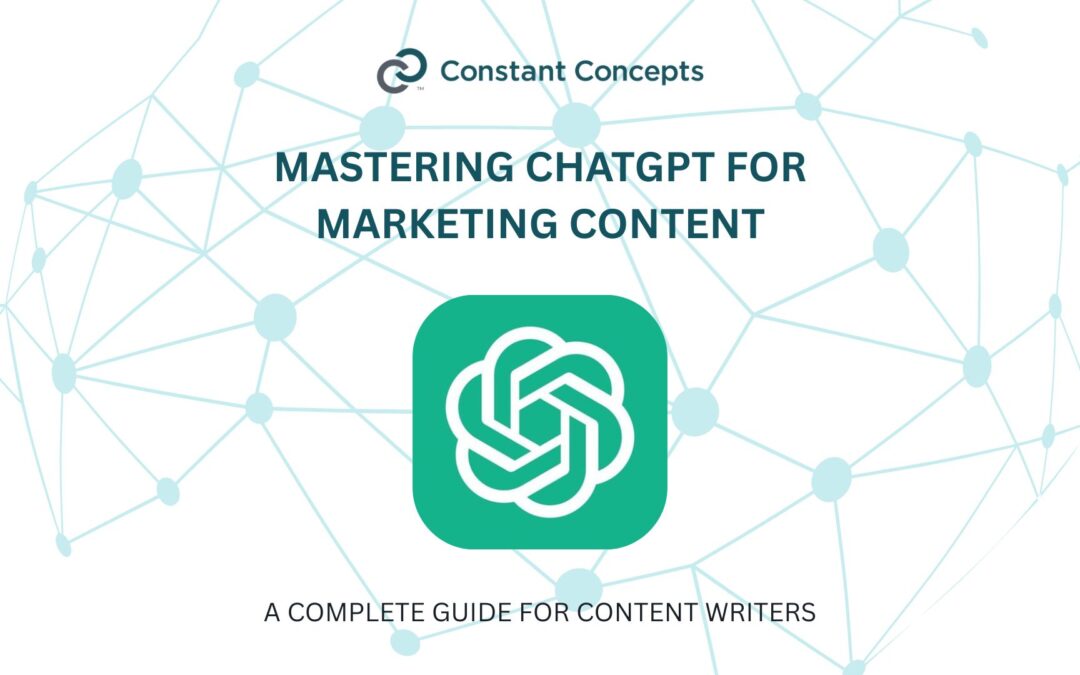ChatGPT has become a go-to tool for content marketers, thanks to its fluency and flexibility. In just a few months after launch, it hit 100 million users – a record pace for any online service. That popularity means you’re likely to encounter it in your workflow. ChatGPT can generate draft blog posts, sales emails, ad copy, social posts, and more – essentially, any marketing content you need. In practice, marketers use it to brainstorm ideas, draft outlines, and even write first drafts of articles or campaign emails. It can write in a conversational tone (as if you’re talking to a human), and you can guide it by specifying your audience, tone, and requirements. For example, you might ask: “Write a blog post outline on topic X for audience Y, including an introduction, three main sections, and a conclusion.”
However, remember that ChatGPT is not infallible. It excels at generating fluent, coherent text, but it draws only on patterns in its training data – it doesn’t truly understand the world or know current events beyond its knowledge cutoff. As one AI guide notes, “ChatGPT’s responses are generated based on statistical patterns… and may not always exhibit real-world understanding or critical thinking”. In other words, it can hallucinate facts or get details wrong, so any factual content should be double-checked. In practice, use ChatGPT as a first draft generator and creative assistant, then edit and fact-check thoroughly. Treat its output as a starting point: “the more guidance you give it (in the form of a detailed prompt), the better your first draft will be”. With that in mind, let’s explore how to use ChatGPT effectively for three common content marketing tasks.
ChatGPT vs. Other AI Writing Tools
Before diving into examples, it helps to see how ChatGPT compares with specialized tools like Jasper.ai or Copy.ai. ChatGPT (particularly GPT-4) is a general-purpose chatbot. It can handle virtually any writing task you throw at it, from technical explanations to creative marketing copy. That versatility is its strength, but it means it doesn’t have built-in templates or marketing-specific workflows. By contrast, Jasper (formerly Jarvis) is an AI writing platform built for marketing teams. Jasper emphasizes things like brand voice, style guides, SEO integration, and collaborative features. As Jasper’s own documentation explains, ChatGPT is “made for a huge array of generalized purposes” (developers, students, travelers, etc.), whereas marketing teams “require an AI solution built for them”. In short, ChatGPT is a jack-of-all-trades AI assistant, while Jasper brands itself as a marketing copilot with end-to-end campaign tools.
In practice, that means Jasper comes with pre-made templates (for emails, ads, blog posts, etc.), and it can remember your brand voice and past projects to keep content consistent. ChatGPT, on the other hand, gives you a blank slate – every time you start a new chat, you usually have to re-specify context. (You can overcome this by feeding it context in the prompt or by using ChatGPT’s API to programmatically set system instructions, but there’s no ready “style guide” wizard in the basic chat UI.) The trade-off is cost and flexibility: ChatGPT has a robust free tier (GPT-3.5 is free, GPT-4 via ChatGPT Plus is paid), while Jasper and Copy.ai require subscriptions. Copy.ai is generally seen as more lightweight: great for short-form content like taglines, social posts, or quick sales copy. In one comparison, Copy.ai is described as “a better fit for sales teams wanting to delegate sales-related tasks,” whereas Jasper is “a good fit for marketing teams that need to produce content at scale”.
The bottom line: ChatGPT vs. specialized tools is like using a Swiss Army knife vs. a dedicated power drill. ChatGPT is versatile and free to start; Jasper/Copy.ai offer more guidance and structure at a price. In many organizations, marketers use ChatGPT for quick ideas and drafts, and then use tools like Jasper or Copy.ai to refine content with SEO data, collaboration features, or built-in best practices. Knowing the strengths and weaknesses of each will help you choose the right tool or combination. For now, let’s focus on making the most of ChatGPT itself.
Crafting Effective Prompts
A key skill is writing prompts that steer ChatGPT to do exactly what you want. Here are general tips to keep in mind:
- Be specific about your goal. Instead of saying “Write a blog post,” try “Outline a blog post about [topic] aimed at [audience] in a friendly tone.” Include the format (outline, list of ideas, full draft, etc.), target audience (beginners, professionals, etc.), and any style cues (“casual and humorous,” “professional and formal,” etc.).
- Define the role. You can frame the prompt as a role-play. For example: “You are a seasoned travel writer. Write a 500-word article on the best hiking trails in California, using an enthusiastic tone.” This often improves results because ChatGPT emulates that persona.
- Include key details. For marketing tasks, mention products, benefits, promotions, or calls to action. E.g.: “Write a cold email to mid-sized retail businesses about our new point-of-sale software, highlighting how it increases sales and reduces checkout time.”
- Ask for structure. If you need headings, bullet points, or sections, mention that. Example: “Provide a 5-point bullet list of key benefits for a product,” or “Give me an outline for a blog post with an introduction, three main sections, and a conclusion.”
- Set limits if needed. For ad copy, specify word count or character limits. E.g.: “Write a 25-word Google ad for [product] targeting [audience] with a strong CTA.”
- Iterate and refine. Use multi-step prompting. First get an outline, then ask for expansion. As one expert advises, “Treat AI-generated blog posts as first drafts… The more guidance you give it (in the form of a detailed prompt), the better your first draft will be”. You might start with ChatGPT acting as a writer to produce an outline, then refine the outline with follow-up prompts, then finally ask ChatGPT to write the article or email using that outline.
- Review and edit. Always plan to edit the AI’s output. “We’ve all seen the imperfection of AI on full display,” notes one writing guide. In practice, weave in your own examples and brand voice: “AI doesn’t have… your human emotion. It’s an imitation… Full articles from [ChatGPT] can be impressive, but they still need your editing, your style, real-life examples, stories, and personal experiences”.
Putting it all together, a strong prompt might look like this:
You are an expert technology blogger. Outline a 1200-word blog post about the latest AI trends, targeting readers who are marketers but not technical. Include an introduction, four subheadings (each with a brief description), and a conclusion. Use a friendly, engaging tone.
ChatGPT would then return a detailed outline. You could follow up:
Write the section “Introduction” from the outline above in a conversational tone.
By breaking tasks into chunks (outline, then each section), you get more control.
Below are some specific examples of using ChatGPT for common marketing content:
Writing Blog Posts
ChatGPT can generate ideas and outline content for blogs. For brainstorming, try prompts like:
- “I run a blog aimed at [AUDIENCE] about [TOPIC]. Come up with 5 blog post ideas I could write about, with 3 sample titles each.”
- “List 10 blog post ideas to promote my product [NAME], targeting [audience]. Include an SEO keyword suggestion for each idea.”
These prompts ask ChatGPT to tap into existing content (it has read lots of blogs during training) to suggest relevant topics and titles. Once you have an idea, get ChatGPT to outline and draft. For example:
- “Outline a blog post titled ‘[Your Topic]’. Write an intro paragraph and bullet points for each main section.”
- “Write a draft of the blog post using the outline above. Aim for 800 words in a friendly, informative style.”
Remember to specify the audience and style. If it’s a “how-to” post for beginners, say so. If it’s a thought leadership piece, specify a formal tone. Giving context like “You are an experienced [field] writer” often helps. After you get a draft, you can refine it further with prompts like “Rewrite the second paragraph in shorter sentences” or “Add a conclusion that encourages readers to subscribe.”
One pro tip from AI writing experts: Always think of the AI’s output as a starting draft. As Ryan Robinson puts it, “treat AI-generated blog posts as first drafts:… [the AI] will always be a first draft”. The more detailed your instructions, the better the output, but it will need your edits to add unique insights and polish. For example, you might get a great list of talking points from ChatGPT, then go in and infuse it with your brand stories or data.
Crafting Marketing Emails
ChatGPT shines at writing emails once you give it the right direction. Begin by specifying the format (subject line + body, number of variations, tone, etc.) and the target audience/persona. For instance:
“Create an email subject line and body to promote our SaaS product to [Target Persona], emphasizing [key benefit]. Use a friendly but professional tone and include a clear call to action.”
This tells ChatGPT who it’s “writing to” and what the goal is. You can also ask it to highlight marketing hooks (FOMO, social proof, discounts, etc.). For example, the email marketing guide at rasa.io suggests prompts like “Create an email copy and subject line that stresses urgency and scarcity.” In response, ChatGPT might write a subject like “Last Chance: 50% OFF + Free Gift!” and a message such as “Hurry! This is your last shot at an amazing deal…”.
To personalize, try something like:
“Write an email to [Job Title/Role] at [Industry] about [Topic/Product], making it feel personalized and relevant to their interests.”
For example: “Create an email subject and copy personalized to a marketing manager at a tech startup interested in increasing ROI for marketing campaigns but short on time.”. In one example, ChatGPT produced a subject like “Enhance ROI with Time-Saving Marketing Strategies” and an email that specifically addresses a “Marketing Manager” in a tech startup.
These examples illustrate how ChatGPT can craft compelling, persona-driven emails. According to Rasa’s guide, marketers can use ChatGPT to “generate creative and engaging email content” and improve personalization and customer interaction. In practice, you might iterate: ask for several subject lines and compare them, or ask ChatGPT to rewrite the email in a more enthusiastic tone, or shorter/longer. Always conclude the prompt with what action you want (e.g. “include a P.S. with a time-limited discount” or “end with a call-to-action inviting them to reply”). Then, edit the AI’s draft to match your brand voice and add any missing details.
Generating Ad Copy
For short-form ads (Google Ads, Facebook, etc.), ChatGPT can quickly spit out multiple variations once you set it up. Key here is brevity and punch. Tell ChatGPT the platform, word/character limit, target audience, and any key points. For example, Narrato’s copywriting prompts suggest:
“You are a copywriter in [industry]. Write a [Google/Facebook] ad for [Product/Service], including [main benefit or offer]. Use a hook and end with a strong call-to-action.”
A concrete prompt might be: “You are a fitness copywriter. Create a 30-word Facebook ad promoting our new home workout app, highlighting that it’s free for 7 days. Include a hook and a CTA.” ChatGPT might produce something like: “Unlock your best shape at home! Try FitApp FREE for 7 days and crush your fitness goals. Download now!”
You can also ask for multiple versions in one go:
“Give me 3 variations of a 25-word Google ad for [Product], targeting [Audience].”
Narrato’s prompts illustrate this: one suggestion is “Give me X variations of an X-word ad copy for [platform] targeting [keywords/audience]. The ad is for [product/service].”. ChatGPT will then output multiple short ad texts. This is great for A/B testing or quickly generating several ideas. You can compare them, pick the best elements, or fine-tune each with follow-up prompts (e.g. “Rewrite option 2 to include the word ‘exclusive’ at the end.”). As always, verify spelling, grammar, and brand compliance (e.g. “Book Now” vs. “Learn More” depending on platform rules).
Additional Prompt Tips
- Use conversational commands: ChatGPT responds well to natural language instructions. Saying “Let’s write…” or asking it to act as a role can help.
- Leverage examples in your prompt: If you have a style or format in mind, show an example. E.g. “Email example: ‘Hey [Name], did you catch our summer sale?’ Now write a new email about [new offer] in this same casual style.”
- Specify format: For readability, you might ask ChatGPT to use bullet lists, numbered lists, or headings where appropriate (“Use bullet points to list features.”).
- Be mindful of length and detail: Very long or vague prompts can confuse the model. If it gives back too little, try adding more detail or constraints. If it’s too long-winded, instruct it to trim.
- In conversation, summarize previous content: If using ChatGPT interactively (not API), it may lose context after several responses. Remind it of key points if the conversation gets long.
- Combine tools when needed: If you want up-to-the-minute info or specialized data (like SEO metrics), you might generate content in ChatGPT and then refine it with other tools (Jasper’s SEO mode, keyword planners, etc.).
Comparing Tools: Trade-offs
To summarize how ChatGPT stacks up:
- ChatGPT (OpenAI): Free to start, very flexible. Great for brainstorming and first drafts. Lacks marketing-specific features (no built-in SEO analysis or workflow). Output can sometimes be generic, so it needs human guidance and editing. Its strength is adaptability – it can pivot to any task or style you define. Because it’s a “general” AI, it doesn’t inherently know your brand, product, or past context unless you tell it each time.
- Jasper (Jarvis): Paid platform (starting ~$50/month). Designed for content teams. Offers templates for blogs, emails, ads, social posts, etc., plus collaboration features. Can store brand voice settings, auto-fill company names, and even connect to SEO tools. According to Jasper, this makes it an “indispensable copilot for enterprise marketing teams” that need consistency and scale. On the downside, it’s locked into their interface and costs money. Jasper’s AI also builds on GPT but adds proprietary features (99.95% uptime claim). If your team needs workflow management or you want a guided writer’s interface, Jasper can be worth it.
- Copy.ai: Also subscription-based. Generally lighter-weight than Jasper. Excels at short-form and sales copy: think one-line taglines, ad headlines, quick email blasts. It’s user-friendly with many presets (e.g. formulas like AIDA, PAS). It usually limits output length more than ChatGPT. If you need to crank out lots of quick social captions or product descriptions, Copy.ai can speed things up. ChatGPT can do these too, but Copy.ai provides a faster, more guided experience for that niche.
In practice, many marketers use both ChatGPT and tools like Jasper/Copy.ai. You might grab ideas and drafts from ChatGPT (since it’s free and straightforward) and then polish or expand them using Jasper’s editor or built-in SEO mode. If you’re in a tight budget, ChatGPT alone can achieve a lot – just be prepared to spend time on prompt engineering and editing.
Examples of Prompts to Try
Here are some sample prompts you can adapt:
- Blog post idea generation:
“I run a blog for beginner gardeners. Give me 5 blog post ideas about growing vegetables, each with a catchy SEO-friendly title.” - Blog outline:
“You’re an expert in personal finance. Outline a 1200-word blog post on ‘Saving for Your First Home’. Include sections with headings and bullet points under each.” - Blog draft (multi-step):
- “Outline a blog post for [Topic] with an intro, 3 main points, and conclusion.”
- “Write the introduction in a friendly tone.”
- “Expand the first main point into a 200-word paragraph.” (Repeat for each section.)
- Email marketing:
“Write a promotional email for [Product]. The recipient is [Customer Persona]. Include a subject line and two short paragraphs. Emphasize [key benefit] and include a deadline to encourage action.” - Email variation (A/B testing):
“Give me 3 versions of a subject line for an email about [Product Feature], each under 50 characters.” - Ad copy:
“You are a fashion copywriter. Create a 20-word Instagram ad caption for our [Product], targeting [demographic], with a clear CTA.” - Landing page headline:
“Write a catchy headline for a landing page selling [Product]. The headline should highlight [unique selling point] and appeal to [audience].” - Ad slogan:
“In 6 words or less, craft a slogan for [Brand/Service] that emphasizes [core value].”
Experiment with these and modify details to fit your context. You can copy and paste them into ChatGPT and see how it responds. Tweak the wording or length to get different results.
Final Tips
- Be conversational: When talking about features, use natural language in prompts. ChatGPT responds well to a human-like instruction style.
- Stay updated: ChatGPT itself may not have the very latest data (unless using a plugin or custom model). For time-sensitive info (trends, events), verify elsewhere.
- Check for bias or inaccuracies: AI can sometimes produce biased language or incorrect facts. Always review the final copy carefully.
- Leverage ChatGPT for variety: One strength is that you can ask for multiple rewrites or angles. For example, “Rewrite the above email from the perspective of enthusiasm vs. professionalism,” or “Summarize the benefits as bullet points”.
- Combine with human creativity: Use ChatGPT to overcome writer’s block or to scale up writing, but add your unique insight and style. As one writing expert notes: ChatGPT can’t tap into “your lived experiences” or emotion – that’s where you come in.
By mastering prompt crafting and knowing when to use each tool, you can greatly boost your productivity. ChatGPT won’t replace copywriters or marketers, but it can amplify your output and handle many routine tasks. Whether you’re a beginner looking for ideas or an agency seeking efficiency, integrating ChatGPT into your writing process – alongside other tools like Jasper or Copy.ai – can help you generate quality content faster.








